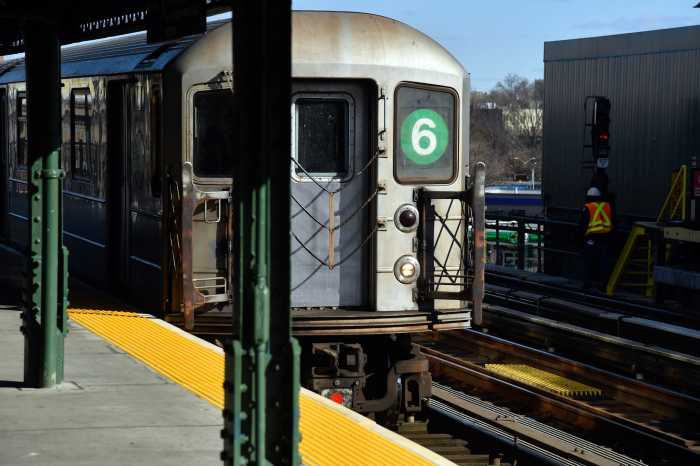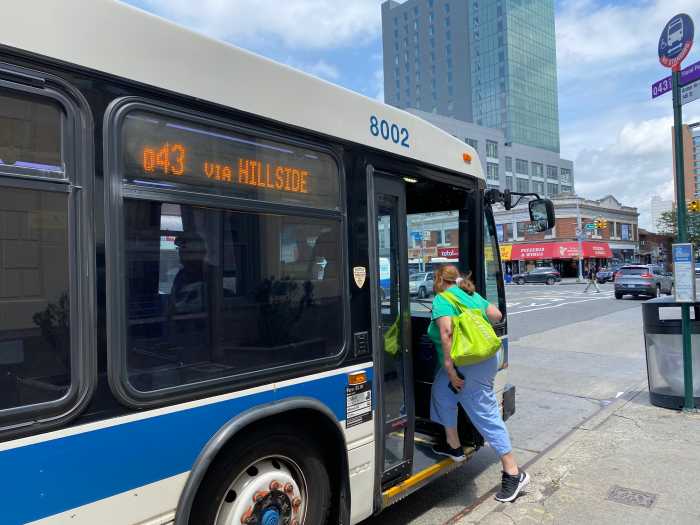Backseat passengers could be forced to buckle up under a bill making its way through the City Council.
The de Blasio administration threw its support behind the legislation as well as several other bills aimed at improving street safety during a Council hearing on Thursday.
Under the bill, backseat passengers of at least 16 years of age would be required to wear a seatbelt, or else they and the driver could face a $50 fine.
“We’ve seen in cases where there have been crashes and fatalities of rear-seat passengers, whether or not they were wearing seat belts was a huge predictor of the outcome,” said city Transportation Commissioner Polly Trottenberg after the hearing. “[There were] much higher rates of fatalities when they weren’t wearing seat belts.”
For-hire drivers, buses and people with disabilities that would prevent seatbelt use would be exempt under the bill, which the had city proposed and Councilman Ydanis Rodriguez has sponsored. Passengers in taxis and e-hails would still be required to strap in.
The city also endorsed legislation that would require drivers to give at least 3 feet of clearance while attempting to pass a cyclist on the street. The current state law only mandates drivers to pass “at a safe distance.”
“To be fair, no one quite knows what that means,” Trottenberg said of the current language.
Both Trottenberg and NYPD Transportation Chief Thomas Chan said the bill would serve mostly as a valuable way to educate drivers — and necessarily a tool for every-day enforcement.
“When you have that 3-foot passing rule it just puts in people’s minds, ‘Oh, I need to give cyclists a decent amount of space,’” Trottenberg added.
The bills are expected to move to a committee vote before then advancing before the full 51-member Council.
Other states and cities have passed similar bills and they come in New York as officials navigate a tragic year on city streets. City cycling deaths have surged; there have been 26 cycling fatalities in 2019 after ten were recorded in all of last year.
Overall, traffic deaths are also on pace to rise after steady declines in the first five years of Vision Zero, the mayor’s hallmark traffic safety initiative.
“This number is out of control and we need to do whatever we have to do in order to address and tackle this problem,” said Rodriguez, referring to the rise in cyclist deaths.
Council members on Thursday trained their focus on the Police Department for its handling of traffic enforcement. Councilman Donovan Richards said cops needed to treat cyclists with “respect.”
The Queens councilman criticized the NYPD for its tendency to ticket bikers at the scene of recent cyclist deaths—a practice the department recently vowed to stop. Richards called the procedure an act of “victim-blaming.”
Richards also lambasted the NYPD for parking in bike lanes when there is seemingly no emergency situation.
Chan said there “there is no excuse for our officers to park [in bike lanes] because it’s convenient.”
But Richards then proceeded to show a video of what appeared to be an entire precinct’s worth of NYPD vehicles parked in a painted bike lane.
Chan and Trottenberg said the city was working to improve parking at precincts, but there didn’t seem to be any clear punishment in the meantime for officers leaving their patrol vehicles in cyclists’ paths.
“Those officers will be directed to move,” Chan said.
“So they’re given warnings?” asked Richards.
“Right,” Chan replied.





































